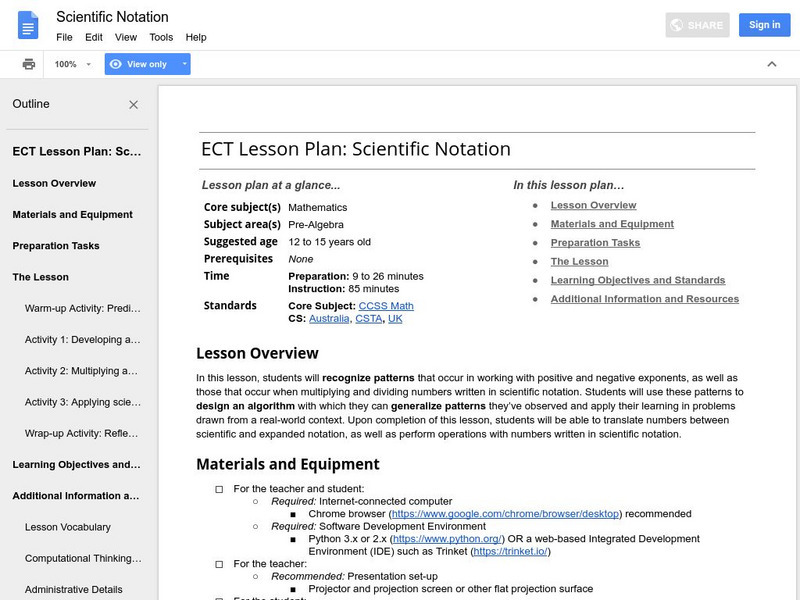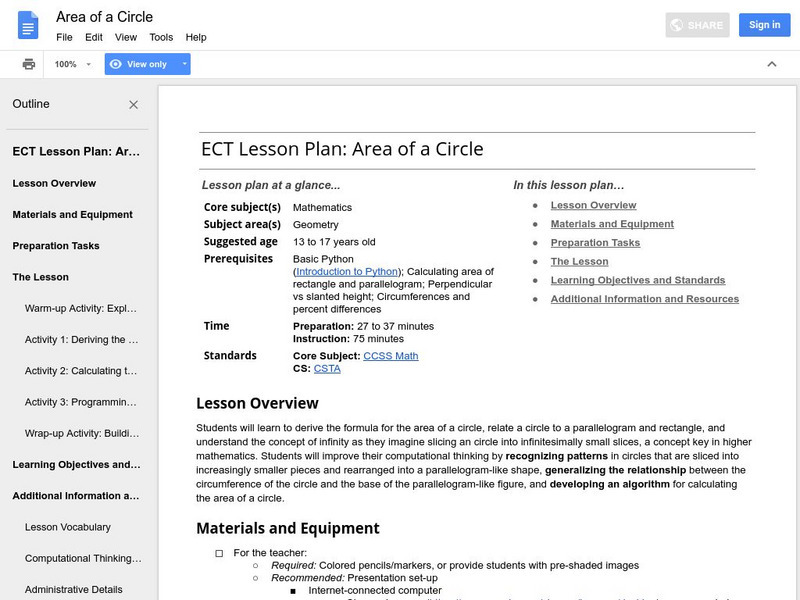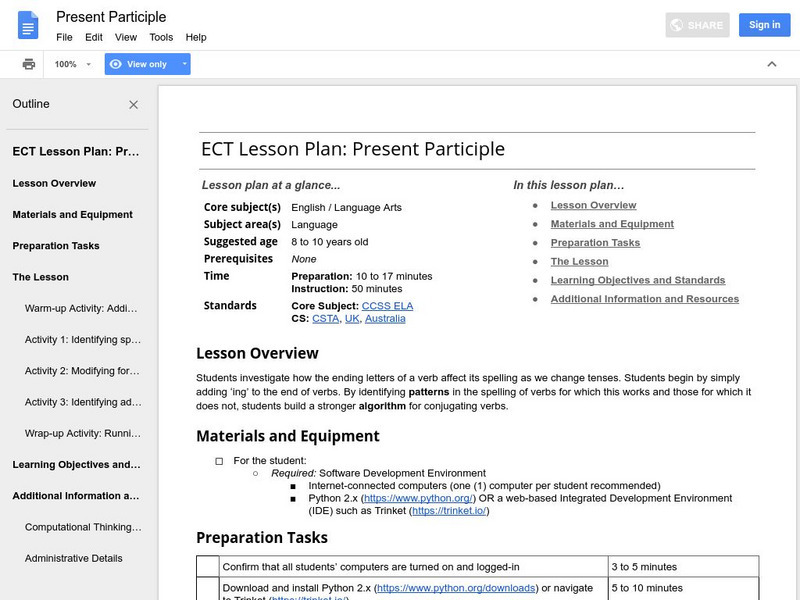Google
Google for Education: Model Electron Configuration Using Computational Thinking
With this demonstration, students will learn to use computational thinking to better understand how the atomic number of an element affects how its electrons are configured.
Google
Google for Education: Ratios and Proportions
Learners use ratio and rate reasoning to solve real-world and math problems by reasoning about tables of equivalent ratios, tape diagrams, double number line diagrams, or equations.
Google
Google for Education: Slope and Y Intercept
Students calculate the slope and y-intercept of a line passing through a given set of points. Use Python to solve various challenging slope and y-intercept exercises.
Google
Google for Education: Multiplying by Numbers Between Zero and One
Example problems practicing multiplying by zero and one where students apply and extend previous understandings of multiplication and division of fractions.
Google
Google for Education: Scientific Notation
Practice problems where students use the Python software to determine which way tho move decimal points when multiplying by exponents.
Google
Google for Education: Area of a Circle
Students learn to derive the formula for the area of a circle. They learn to relate a circle to a parallelogram and rectangle while learning the concept of infinity as they imagine slicing an circle into infinitesimally small slices.
Google
Google for Education: Exploring Computational Thinking Lessons and Examples
Incorporate computational thinking into a curriculum with these classroom-ready lessons, examples, and programs. Lessons include complete teacher editions, student worksheets, and any applicable Python programs.
Google
Google for Education: Present Participle
In this example students learn two special cases for the past and present participle of verbs. They reinforce their understanding by completing a Python program to correctly conjugate special cases of verbs.









